#Rubin museum of art
Explore tagged Tumblr posts
Text

The Worthy One, Pantaka (detail) Tibet, 17th century
#post card#post cards#postcard#postcards#the worthy one pantaka#tibet#17th century#rubin museum of art
13 notes
·
View notes
Text
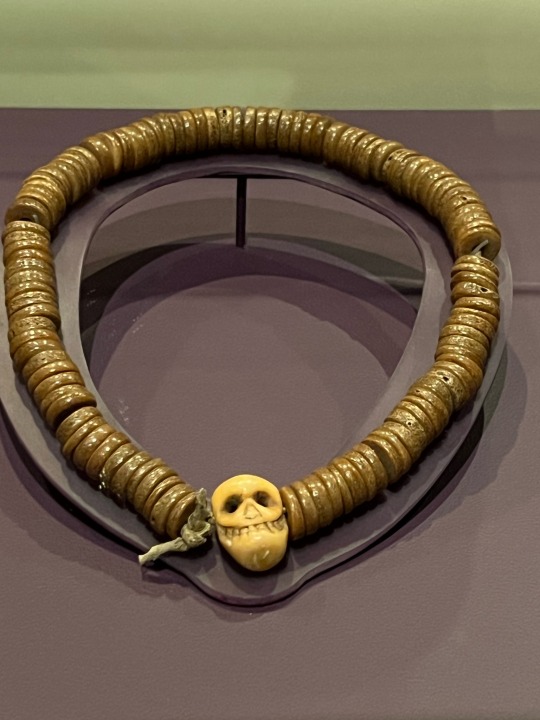
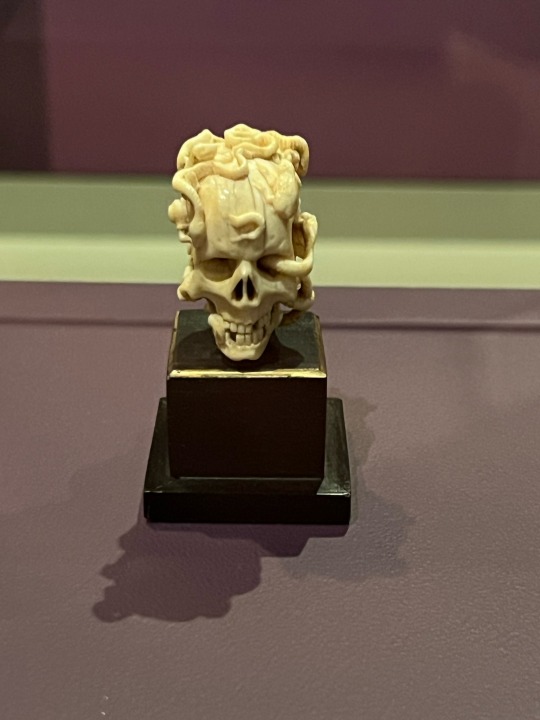
The two (goth) genders.
5 notes
·
View notes
Text
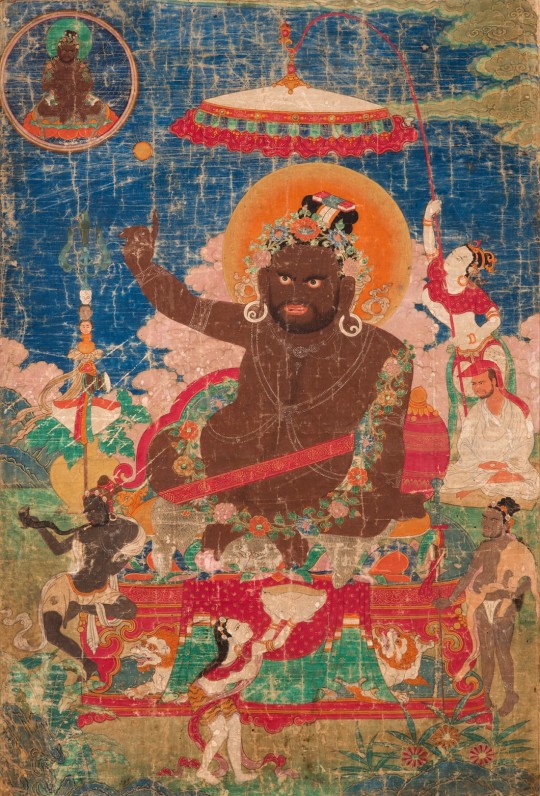
The great Tantric master (mahasiddha) Virupa, who is said to have lived in the seventh century, became a wandering yogi after being an abbot of India’s greatest Buddhist monastery.
This painting shows him seated with a raised hand forming a gesture of subjugation. Virupa’s gesture—a raised hand with a finger pointing up to the sun—refers to an episode when he was on an epic drinking spree and agreed with the tavern proprietor to settle the bill at sunset. He then used his great meditative powers to stop the sun in its course until after several days without night the local ruler, fearful of a possible drought, paid his tab. This story emphasizes the magical abilities Virupa gained from tantric practices, which he transmitted to his students.
We hope you celebrate today by remembering Virupa and enjoying the sunshine! ________ Mahasiddha Virupa; Gongkar Chode Monastery, U Province, Central Tibet; ca. 1659-1671; pigments on cloth; Rubin Museum of Art; C2004.14.1 (HAR 65340)
[Rubin Museum of Art]
* * * *
“36. The intellect and the Puruṣa (Ātman, Self) are totally different, the intellect existing for the sake of the Puruṣa, while the Puruṣa exists for its own sake. Not distinguishing this is the cause of all experiences; and by saṁyama on the distinction, knowledge of the Puruṣa is gained.
37. From this knowledge arises superphysical hearing, touching, seeing, tasting and smelling through spontaneous
38. These [superphysical senses] are obstacles to [nirbija] samādhi but are siddhis (powers or accomplishments) in the worldly pursuits.”
― Satchidananda , The Yoga Sutras of Patanjali
#tantra#Mahasiddha Virupa#Siddhis#Rubin Museum of Art#Buddhist#Satchidananda#The Yoga Sutras of Patanjali
6 notes
·
View notes
Text

2 notes
·
View notes
Text

Smashana Adipati, “Lords of the Charnel Ground” (18th century), Tibet,
Painted terracotta,
Rubin Museum of Art, C2002.36.1 (HAR 65149)
Photograph by David De Armas, Rubin Museum of Art, 2012
#art#creepy#surreal#freaky#death#smashana#adipati#lords#skeleton#18th century#tibet#sculpture#rubin museum of art#afterlife#buddhism#mortality#human
2 notes
·
View notes
Text
youtube
Mahabodhi Temple Model, June 18, 2024
Model of the Mahabodhi Temple; eastern India, probably Bodhgaya; ca. 11th century; stone (serpentinite); Rubin Museum of Art; purchased with funds from Ann and Matt Nimetz and Rubin Museum of Art; C2019.2.2 (HAR 68417)
A conversation with Dr. Elena Pakhoutova, Senior Curator, Rubin Museum of Art and Dr. Beth Harris
Rubin Museum senior curator Dr. Elena Pakhoutova and Smarthistory’s Dr. Beth Harris explore a model of the most important temple in the Buddhist world. The Mahabodhi Temple, located in Bodhgaya, India, is where the Buddha attained awakening while sitting under the bodhi tree.
The Rubin Museum of Art has teamed up with Smarthistory to bring you an ‘up-close’ look at select objects from the Rubin’s preeminent collection of Himalayan art. Featuring conversations with senior curators and close-looking at art, this video series is an accessible introduction to the art and material culture of the Tibetan, Himalayan, and Inner Asian regions. Learn about the living traditions and art-making practices of the Himalayas from the past to today.
Learn more about the Mahabodhi Temple on Project Himalayan Art, a resource from the Rubin for learning about Himalayan, Tibetan, and Inner Asian art and cultures:
#Rubin Museum of Art#Mahabodhi Temple#Bodhgaya#architecture#miniature#sculpture#stone#Buddhism#art#art history#11th century#Project Himalayan Art#symbolism#smarthistory
0 notes
Text


Still my favorite art exhibit to this day
0 notes
Text

Door Defender
Artist Shezad Dawood's neon piece, "Wrathful Activity, Fierce Energy", on display at the entrance of the, soon to be closed, Rubin Museum of Art, 17th Street (off of Seventh Avenue) Chelsea, New York City.
28 notes
·
View notes
Text
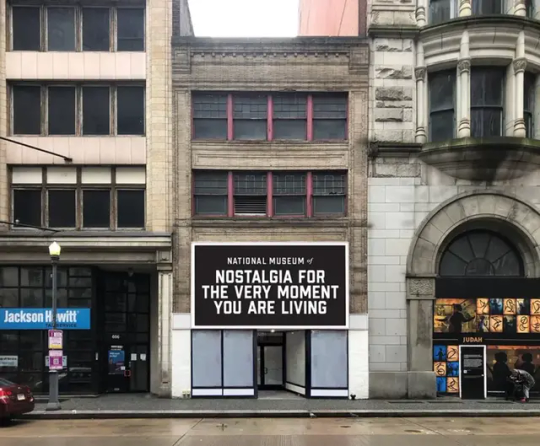
The National Museum by Jon Rubin (2023)
6 notes
·
View notes
Text

The Rubin Museum
#nyctrip#the rubin museum#himalayan art#detail of mural depicting the teachings of Buddhist master Pema Lingpa (1450 - 1521)#tibetan art#indian art
9 notes
·
View notes
Text
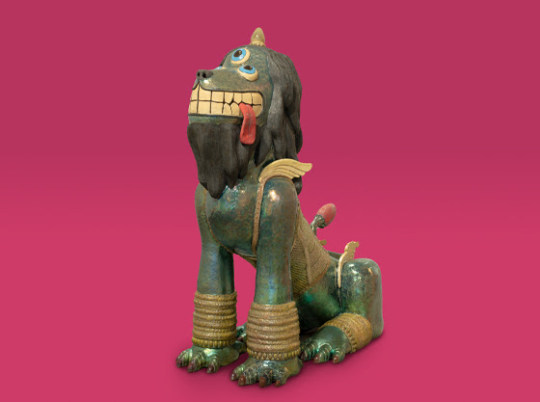
A sculpture by Bhutanese artist Pema "Tintin" Shering, from the upcoming exhibition "Reimagine: Himalayan Art Now" at the Rubin Museum in New York City. Opens March 15, 2024.
4 notes
·
View notes
Text

The National Museum is a public art project founded and curated by Jon Rubin and presented by Pittsburgh Cultural Trust. Different artists are invited to change the name of the museum and an essay is written using the title as a jumping off point. The first iteration is by artist and writer Pablo Helguera.
About the project from Jon Rubin’s website–
The National Museum repeatedly asks which stories, histories and futures are deemed worth saving and which are ignored or forgotten. Each month, a different artist is invited to change the name of the museum and a national writer is invited to use that museum title as the jumping off point for an essay. In its first year, the project currently consists of storefront signage, street posters, printed broadsheets, a website and monthly accompanying essays.
When a name starts with “The National Museum” it triggers contentious and political associations with borders, nationhood, even citizenship and belonging. Who gets to determine the belonging of an entire group of people bound only by the fact of their geographical location. There’s something absurd about that, if you think about it. Instead of claiming ownership over a diverse populous or even a disparate set of objects, can the notion of the “national” be rethought as something that is less tangible, less object-oriented?
There is a fundamental hubris and absurdity in calling something, anything, a museum, let alone The National Museum. But, in many ways, it’s really no different than any other museum that someone, usually with far more money, privilege, and power than any of my artist peers or myself, has simply made up. So, in a way, the project functions as a kind of loophole or work-around, a participatory fiction that allows a variety of artists to put forth an ongoing series of grand propositions, a theoretical institution that repeatedly brings into question the certainty and reality of our pre-existing institutions.
The National Museum elucidates how museums, especially national ones, are perhaps no different than the nation-states in which they reside. Each is an imagined political construct, a collective fiction used to collect, categorize, narrativize, and control. Throughout modern history museums have used the collections they steward and the stories they tell to validate extractive legacies of colonialism. And, although our current museums, both national and private, are staffed by people with experience in the arts and humanities, the ultimate decision-makers in many of these institutions are wealthy donors and trustees who derive financial benefits from, and exert ideological control over, the fundamental mission of museums. So, while the general public think museums are nominally for “everyone,” the truth is that they are delimited by economic, geographic, racial, and cultural boundaries that restrict their function, design, and access to select publics.
Pablo Helguera’s essay on building façades as art and metaphor, Creditable Unrealities, is included on the broadsheet for the project (as well as his Substack Beautiful Eccentrics), and is a highly enjoyable read.
It includes this passage on how he came up with his name for the museum-
“Ultimately, I reasoned that façades are the most direct indicator of the time when they were built: they are the things that we try to use as visual reference to identify a city we know in a historic photograph; they are time markers. And when it comes to museums, they traditionally seek to project timelessness, especially those august institutions whose neoclassic façades promise a container of art for the ages. So I thought that this façade should be the threshold not of art history but of our own awareness of that history and our minuscule place in it, knowing that the present that we are living so vividly will soon wash away, largely unimportant within the broader scope of human life. In 2001, doing research on people who consumed ecstasy, I was struck by the effect that their drug had in some people’s temporal awareness, and how it resonated with my own (drug-free) experiences. Thus the phrase “I have nostalgia for the moment I am living”, which gave the inaugural title to the National Museum.”
The next iteration of the museum will feature Edgar Heap of Birds (Hock E Aye Vi). The broadside will be written by poet, writer, lecturer, curator, and policy advocate Suzan Shown Harjo.
#The National Museum#Jon Rubin#Pablo Helguera#Pittsburgh Cultural Trust#Pittsburgh Public Art#Public Art#Art#Art Writing#Downtown Pittsburgh#Edgar Heap of Birds#Essays#Hock E Aye Vi Edgar Heap of Birds#Museum#Museum as Concept#Nostalgia#Pennsylvania Public Art#Writing#Suzan Shown Harjo
2 notes
·
View notes
Text
Cham dance - turn audio up!
2 notes
·
View notes
Photo


Today is the Lunar New Year which marks the start of the Year of the Rabbit. It is also Sonam Losar! Today, people in some parts of Tibet, Nepal and India, especially the Tamang people of Nepal, will celebrate the new year festival of Sonam Losar. People will visit monasteries and stupas where special rituals with mask dances are performed to drive away evil spirits, and houses and surroundings are cleaned to welcome deities. This celebration is also associated with the arrival of the Year of the Rabbit!
To celebrate the Year of the Rabbit, we’re highlighting a depiction of a rabbit in our collection! In the center of this work is the Seventh Dalai Lama, Kalzang Gyatso (1708–1757). Surrounding the central figure is an expanded presentation of his previous incarnations, including predecessors of the Dalai Lama lineage. The stories of their previous lives were modeled on narratives rooted in the Buddhist canonical jataka genre, including the rebirth story of a hare (rabbit) with magical skills, which is depicted at top right.
[Rubin Museum of Art]
12 notes
·
View notes
Text
A Walk Along Speedway Across Time



Entrance to Speedway from Deen Keaton St. 11 Mar 2019.

Engineering Education and Research Center (EER). UT Electrical and Computer Engineering (ECE). 30 Dec 2018.

Moffet Molecular Biology Building. 20 Mar 2019.
Wells Auditorium. Department of Chemistry. 1 July 2022.

Norman Hackerman Building (NHB) featuring Nancy Rubins' Monochrome for Austin, July 1, 2022.



The Bill & Melinda Gates Computer Science Complex / the Gates-Dell Complex. From top: 30 Mar 2018, 17 Dec 2019 (featuring Sol Lewitt's Circle with Towers), 13 Jan 2020.

Courtyard outside the William C. Powers Student Activity Center (WCP, formerly SAC). 21 Mar 2019.

Speedway in between McCombs CBA and Gregory Gym. 15 Apr 2021.



Left: McCombs School of Business CBA Hall of Honors (CBA North Entrance) from Speedway. 18 Jul 2018. Middle: Gregory Gymnasium featuring the Make it Y(our) Texas campaign. 6 Oct 2022. Right: View of Gregory Gym and McCombs CBA from Perry-Castañeda Library (PCL). 30 Dec 2019.



Left: New Undergraduate Admissions Center (attached to PCL). 15 May 2023. Middle: Inside the Perry-Castañeda Library (PCL). 21 Sep 2019. Right: View of Blanton Museum Smith Building (where the gift shop is) fro PCL. 30 Dec 2019.



Blanton Museum of Art. Top: Pictures from the Brazos St. side. 1 Mar 2019. Bottom: Blanton Museum of Art's Moody Patio, featuring Austin by Ellsworth Kelley and the Petals art installations. 15 May 2023.

End of Speedway on E. Martin Luther King Jr. Blvd: The Capitol Mall. 15 May 2023.
#UT Speedway#Engineering Education and Research Center#EER#UT Electrical and Computer Engineering#Moffet Molecular Biology Building#UT Biology#Wells Auditorium#UT Chemistry#Norman Hackerman Building#Nancy Rubins#Monochrome for Austin#Gates-Dell Complex#UT Computer Science#Circle with Towers#Sol Lewitt#William C. Powers Student Activity Center#SAC Courtyard#McCombs School of Business#McCombs (CBA)#Gregory Gymnasium#Perry-Castañeda Library#Austin by Ellsworth Kelley#Ellsworth Kelley#Blanton Museum of Art#Moody Patio#Texas Capitol Mall#Texas Capitol
0 notes
Text
NY March ArtXop Highlights

View On WordPress
#Affordable Art Fair#Albert Oehlen#Art Angler#ARTECHOUSE#Chief & Spirits#Cube Gallery#david zwirner#franz west#gagosian#harpers gallery#joani tremblay#Leonard Tourne Gallery#MAGENTAVERSE#nicole eisenman#NYC#Pantone#paul mccarthy#print center#The Rubin Museum
1 note
·
View note